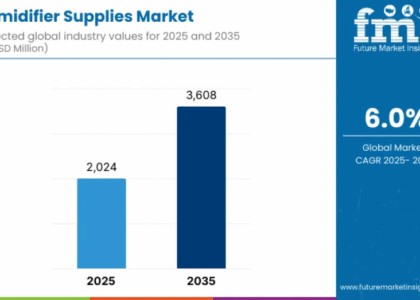The B2B telecommunication market has high growth potential and is projected to grow between 2025 and 2035, fueled by the embracement of cloud-based communication solutions, 5G network deployments, and industrial digitization. From USD89.23 billion in 2025, the industry is projected to reach USD 293.05 billion by 2035, exhibiting a 12.6% CAGR in the forecast period.
In a world where agility, speed, and connectivity define enterprise success, the real-time flow of information isn’t just a necessity—it’s the foundation of modern business. Behind every seamless transaction, global video conference, or cloud-based collaboration lies a robust infrastructure that keeps the digital economy humming: B2B telecommunication.
Often operating behind the scenes, B2B telecom solutions serve as the connective tissue for industries of all kinds—linking operations, empowering communication, and enabling digital transformation at scale. They don’t make headlines like consumer tech, but they quietly power the backbone of business in motion.
Get Ahead with Our Report: Request Your Sample Now!
https://www.futuremarketinsights.com/reports/sample/rep-gb-1908
More Than Bandwidth: Enabling Enterprise-Grade Intelligence
At its core, B2B telecommunication is about more than just connecting two points—it’s about empowering organizations with secure, scalable, and responsive networks. From leased lines and MPLS systems to cloud telephony and SD-WAN, modern telecom services deliver the performance and reliability that today’s businesses demand.
These networks not only support voice and data but also enable emerging technologies like IoT, AI, and real-time analytics. Whether it’s remote monitoring in manufacturing, high-frequency trading in finance, or global CRM integration in retail, B2B telecom provides the digital foundation to make it all work—instantly, securely, and at scale.
Overshadowed by Consumer Connectivity, Yet Driving Enterprise Growth
While 5G smartphones and streaming platforms steal the spotlight, B2B telecommunication quietly underpins everything from logistics to healthcare. It’s the engine room of modern commerce—ensuring that supply chains stay synchronized, remote teams stay connected, and cloud platforms stay available 24/7.
In sectors where downtime means lost revenue or risk to life, such as financial services, aviation, and telemedicine, the reliability and latency of telecom infrastructure can define operational success. Without B2B connectivity, business continuity would grind to a halt.
Built for Complexity, Designed for Customization
B2B telecom services are rarely one-size-fits-all. Enterprises require tailored connectivity solutions that align with their size, structure, and digital maturity. Whether through hybrid networks, managed services, or private cloud solutions, providers are evolving to offer flexibility without compromising security or performance.
From multinational corporations with global data centers to startups scaling on edge computing, telecom partners are helping businesses design networks that adapt to workload demands, data sovereignty rules, and cybersecurity protocols—ensuring that infrastructure grows with ambition.
The Challenge of Integration in a Hybrid World
As companies adopt hybrid work models, migrate to multi-cloud environments, and expand across borders, their telecom needs become more complex. Seamless integration across platforms—be it UCaaS, cybersecurity, or IoT—has become a strategic requirement, not a luxury.
At the same time, regulatory compliance, data privacy laws, and rising cyber threats are pushing telecom providers to deliver not just faster, but smarter and safer networks. The evolution of network-as-a-service (NaaS) models is helping meet these demands—turning connectivity into a managed, intelligent utility.
Exhaustive Market Report: A Complete Study
https://www.futuremarketinsights.com/reports/b2b-telecommunication-market
A Catalyst for Digital Sustainability
In the age of sustainable enterprise, digital efficiency matters. B2B telecom plays a growing role in reducing environmental footprints by enabling virtualization, remote collaboration, and smarter energy use. Cloud-based infrastructure, enabled by resilient networks, is helping businesses transition from physical to digital operations—cutting travel, paper, and power usage.
Moreover, with telecom providers themselves moving toward greener data centers, low-energy infrastructure, and carbon neutrality goals, the industry is helping drive a more sustainable digital economy from the inside out.
The Invisible Network of Progress
You don’t see the fiber cables, wireless towers, or global switches that keep businesses running—but you experience their impact every time a call connects, a system syncs, or a team collaborates across time zones. B2B telecommunication doesn’t demand attention—it delivers it.
As industries embrace AI, automation, and global collaboration, the role of telecom as a strategic enabler will only grow. It’s not just about connecting devices—it’s about connecting value, securely and seamlessly. In every click, call, and contract, B2B telecom is there—quietly powering the pulse of modern business.






